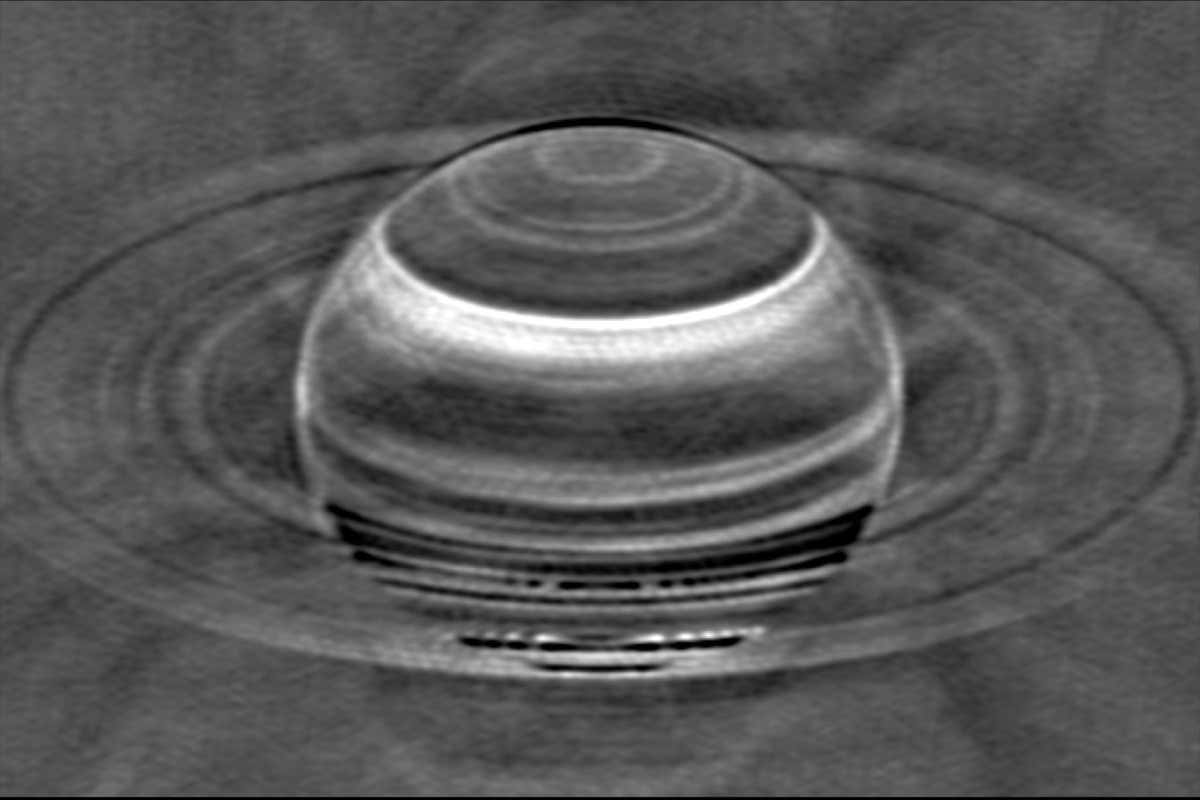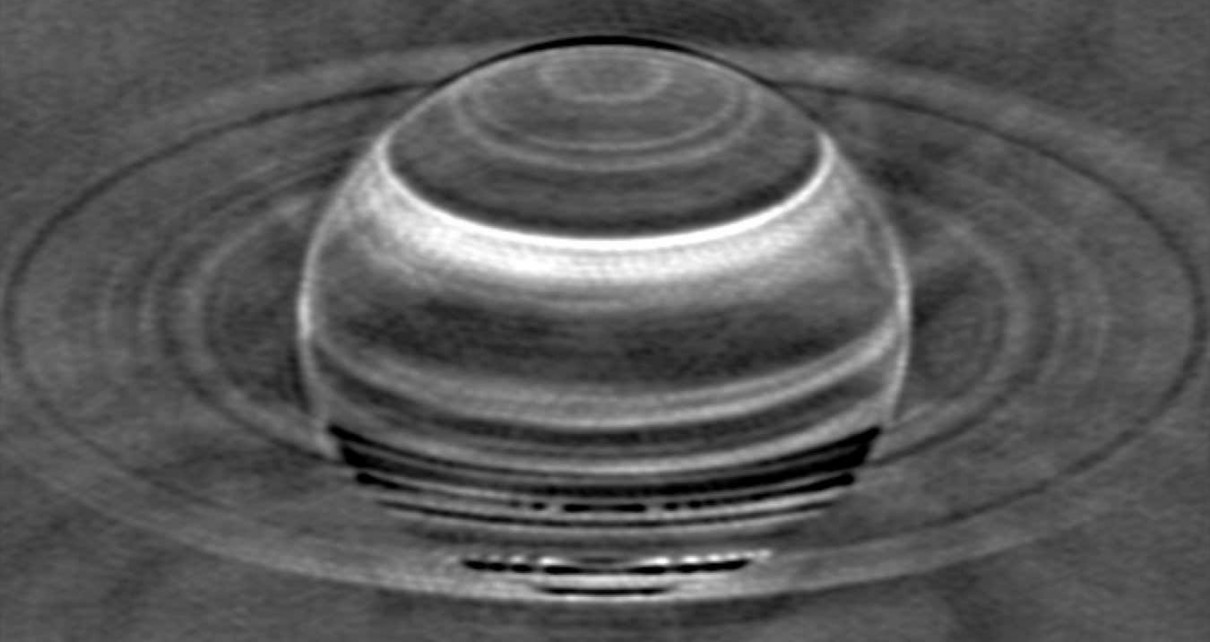[ad_1]

A radio image of Saturn shows traces of past storms. The broad, bright band near the top of the image is the aftermath of a 2010 storm
R. J. Sault and I. de Pater
When it rains on Saturn, it pours. Every 10 to 20 Earth years, Saturn experiences enormous storms kilometres wide, which look like huge white blotches in the atmosphere with tails stretching all the way around the planet. Now, scientists have found that remnants of these tempests stick around in Saturn’s atmosphere for hundreds of years.
They found these traces using the Karl G. Jansky Very Large Array in New Mexico to map ammonia on Saturn. Ammonia moves through giant planets’ atmospheres in a similar way to the movement of water through Earth’s atmosphere, so Cheng Li at the University of Michigan and his colleagues sought to examine how it behaved in the aftermath of Saturn’s most recent storm in 2010. What they found instead was evidence that Saturn’s atmosphere was still being affected by storms that occurred as early as 1876, and perhaps even earlier.
“We know that these storms are big, but based on our daily experience of weather we’ve never considered the possibility that these storms can leave such a long remnant after hundreds of years,” says Li. “On Earth, weather comes and goes, but on Saturn it sticks around.”
The anomalies they found were areas of the atmosphere in which ammonia was depleted at higher altitudes but relatively abundant at lower altitudes. These most likely correspond to areas where ammonia rained down from the upper atmosphere, possibly in the form of hail-like “mushballs”, and then evaporated and hung around as vapour in the lower atmosphere.
“On Earth, if you have a heavy rain you accumulate water on the ground in puddles,” says Li. “But on giant planets there’s no surface, so where could that rain go? It just evaporates.”
They found patches of anomalies corresponding to all six of the giant storms that have been observed on Saturn since 1876, and one additional patch that they think came from a storm that occurred decades earlier than that. The way that the anomalies have moved since the storms were active may help us learn about winds and currents within Saturn.
Surprisingly, these observations of Saturn’s weather pose a sharp contrast to similar observations of storms on Jupiter, which could help us unravel the inner workings of gas giants more generally. “They have similar compositions, they have similar gravity, but why is the weather so different? It’s these contrasts that can help us understand giant planets,” says Li.
Topics:
[ad_2]
Source link




